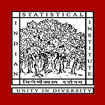Binary opinion dynamics with biased agents and agents with different degrees of stubbornness
Document Type
Conference Article
Publication Title
Proceedings of the 28th International Teletraffic Congress, ITC 2016
Abstract
In this paper, we investigate the impact of random interactions between agents in a social network on the diffusion of opinions in the network. Opinion of each agent is assumed to be a binary variable and each agent is assumed to be able to interact with any other agent in the network. This models scenarios where every agent in the network has to choose from two available options and the size of the neighborhood of each agent is an increasing function of the total number agents in the network. It is assumed that each agent updates its opinion at random instants upon interacting with other randomly sampled agents. We consider two simple rules of interaction: (1) the voter rule in which the updating agent simply copies the opinion of another randomly sampled agent; (2) the majority rule, in which the updating agent samples multiple agents and adopts the majority opinion among the sampled agents and the agent itself. Under each rule, we consider two different scenarios which have not been considered in the literature thus far: (1) where the agents are 'biased' towards one of the opinions, (2) where different agents have different degrees of stubbornness. We show that the presence of biased agents reduces the consensus time for the voter rule exponentially as compared to the case where the agents are unbiased. For the majority rule model with biased agents, we show that the network reaches consensus on a particular opinion with high probability only when the initial fraction of agents having that opinion is above a certain threshold. For the majority rule model with stubborn agents, we observe metastability where the network switches back and forth between stable states spending long intervals in each state.
First Page
261
Last Page
269
DOI
10.1109/ITC-28.2016.143
Publication Date
7-2-2016
Recommended Citation
Mukhopadhyay, Arpan; Mazumdar, Ravi R.; and Roy, Rahul, "Binary opinion dynamics with biased agents and agents with different degrees of stubbornness" (2016). Conference Articles. 679.
https://digitalcommons.isical.ac.in/conf-articles/679

